Duquesne Spy Ring

The Duquesne Spy Ring is the largest espionage case in the United States history that ended in convictions. A total of 33 members of a German espionage network headed by Frederick "Fritz" Joubert Duquesne were convicted after a lengthy investigation by the Federal Bureau of Investigation (FBI). Of those indicted, 19 pleaded guilty. The remaining 14 were brought to jury trial in Federal District Court, Brooklyn, New York, on September 3, 1941; all were found guilty on December 13, 1941. On January 2, 1942, the group members were sentenced to serve a total of over 300 years in prison.
The agents who formed the Duquesne Ring were placed in key jobs in the United States to get information that could be used in the event of war and to carry out acts of sabotage: one opened a restaurant and used his position to get information from his customers; another worked on an airline so that he could report Allied ships that were crossing the Atlantic Ocean; others worked as delivery people as a cover for carrying secret messages.
William G. Sebold, who had been blackmailed into becoming a spy for Germany, became a double agent and helped the FBI gather evidence. For nearly two years, the FBI ran a shortwave radio station in New York for the ring. They learned what information Germany was sending its spies in the United States and controlled what was sent to Germany. Sebold's success as a counterespionage agent was demonstrated by the successful prosecution of the German agents.
One German spymaster later commented the ring's roundup delivered "the death blow" to their espionage efforts in the United States. FBI director J. Edgar Hoover called his concerted FBI swoop on Duquesne's ring the greatest spy roundup in U.S. history.[1]
The 1945 film The House on 92nd Street was a thinly disguised version of the Duquesne Spy Ring saga of 1941.[citation needed]
FBI agents[]
William Sebold (double-agent)[]

After the Duquesne Spy Ring convictions, Sebold was provided with a new identity and started a chicken farm in California.[2]
Impoverished and delusional, he was committed to Napa State Hospital in 1965. Diagnosed with manic-depression, he died there of a heart attack five years later at 70.[3] His life story as a double agent was first told in the 1943 book Passport to Treason: The Inside Story of Spies in America by .
James Ellsworth[]
Special Agent Jim Ellsworth was assigned as Sebold's handler or body man, responsible for shadowing his every move during the sixteen-month investigation.[4][5]
William Gustav Friedemann[]
William Gustav Friedemann was a principal witness in the Duquesne case. He began working for the FBI as a fingerprint analyst in 1935 and later became an agent after identifying a crucial fingerprint in a kidnapping case.[6]
After World War II, he was assigned to Puerto Rico, where he pinpointed the group behind the assassination attempt on President Harry Truman.[7] Friedemann died of cancer on August 23, 1989 in Stillwater, Oklahoma.[7]
Convicted members of Duquesne Spy Ring[]
Frederick Joubert Duquesne aka Fritz Joubert Duquesne[]
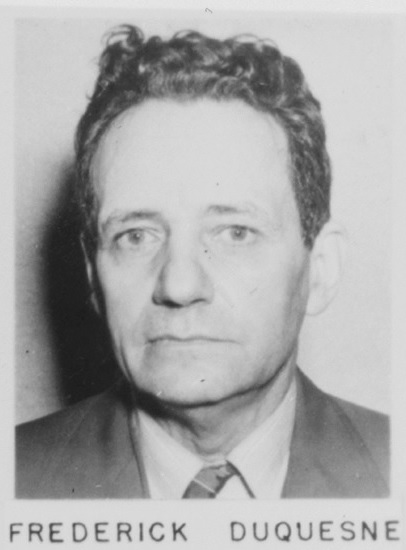
Born in Cape Colony, South Africa, on September 21, 1877, and a naturalized citizen of the United States in 1913, Fritz Joubert Duquesne was a Captain in the Second Boer War[8] and later a Colonel in the Abwehr, Germany's division of military intelligence.[9]
Duquesne was captured and imprisoned three times by the British, once by the Portuguese, and once by the Americans in 1917, and each time he escaped.[8] In World War I, he was a spy and ring leader for Germany and during this time he sabotaged British merchant ships in South America with concealed bombs and destroyed several.[8] Duquesne was also ordered to assassinate an American, Frederick Russell Burnham, Chief of Scouts for the British Army, but failed to do so.[10] He was also known as "The man who killed Kitchener" since he claimed to have sabotaged and sunk HMS Hampshire, on which Lord Kitchener was en route to Russia in 1916.[11]
In the spring of 1934, Duquesne became an intelligence officer for the Order of 76, an American pro-Nazi organization, and in January 1935 he began working for U.S. government's Works Progress Administration. Admiral Wilhelm Canaris, head of the Abwehr, knew Duquesne from his work in World War I and he instructed his new chief of operations in the U.S., Col. Nikolaus Ritter, to make contact. Ritter had been friends with Duquesne back in 1931 and the two spies reconnected in New York on December 3, 1937.[2]
On February 8, 1940, Ritter sent Sebold, under the alias of Harry Sawyer, to New York and instructed him to set up a shortwave radio-transmitting station and to contact Duquesne, code-named DUNN.[2]
Once the FBI discovered through Sebold that Duquesne was again in New York operating as a German spy, director J. Edgar Hoover provided a background briefing to President Franklin Roosevelt.[9] FBI agent Raymond Newkirk, using the name Ray McManus, was now assigned to DUNN and he rented a room immediately above Duquesne's apartment near Central Park and used a hidden microphone to record Duquesne's conversations.[9] But monitoring Duquesne's activities proved to be difficult. As Newkirk described it, "The Duke had been a spy all of his life and automatically used all of the tricks in the book to avoid anyone following him ... He would take a local train, change to an express, change back to a local, go through a revolving door and keep going on right around, take an elevator up a floor, get off, walk back to the ground, and take off in a different entrance of the building."[9] Duquesne also informed Sebold that he was certain he was under surveillance, and he even confronted one FBI agent and demanded that he stop tracking him, a story confirmed by agent Newkirk.[9]
In a letter to the Chemical Warfare Service in Washington, D.C., Duquesne requested information on a new gas mask. He identified himself as a "well-known, responsible and reputable writer and lecturer". At the bottom of the letter, he wrote, "Don't be concerned if this information is confidential, because it will be in the hands of a good, patriotic citizen." A short time later, the information he requested arrived in the mail and a week later it was being read by intelligence officers in Berlin.[12]
He served his sentence in Leavenworth Federal Penitentiary in Kansas, where he was mistreated and beaten by other inmates. In 1954, he was released due to ill health, having served 14 years, and died indigent, at City Hospital on Welfare Island (now Roosevelt Island), New York City on May 24, 1956, at the age of 78.[9]
Max Blank[]

Blank boasted to agent Sebold that he had been in the espionage business since 1936, but that he had lost interest in recent years because payments from Germany had fallen off.[13]
Blank pleaded guilty to violation of the Foreign Agents Registration Act. He received a sentence of 18 months' imprisonment and a $1,000 fine.[13]
Heinrich Clausing[]
Around 1938, Heine was recruited to find American automobile and aviation industry secrets that could be passed to Germany through the Duquesne Spy Ring.[13]
Later it was discovered that Heine was also the mysterious "Heinrich" who supplied the spy ring with aerial photographs.[13]
After obtaining technical books relating to magnesium and aluminum alloys, Heine sent the materials to Heinrich Eilers. To ensure safe delivery of the books to Germany in case they did not reach Eilers, Heine indicated the return address on the package as the address of Lilly Stein.[13]
Upon conviction of violating the Registration Act, Heine received a $5,000 fine and a 2-year prison sentence.
Herman W. Lang[]

Herman W. Lang had participated with Adolf Hitler in the Munich beer hall putsch of 1923.[2]
Until his arrest, Lang had been employed by the Carl L. Norden Corp., which manufactured the top secret Norden bombsight. Ritter then hid the plans in the wooden casing for an umbrella, and, on January 9, 1938, personally handed the umbrella off to a German steward and secret courier on the ship Reliance bound for Bremen.[2]
The Norden bombsight had been considered a critical wartime instrument by the United States Army Air Forces, and American bombardiers were required to take an oath during their training stating that they would defend its secret with their own life, if needed.[14] The Lotfernrohr 3 and the BZG 2 in 1942 used a similar set of gyroscopes that provided a stabilized platform for the bombardier to sight through, although the more complex interaction between the bombsight and autopilot was not used. Later in the war, Luftwaffe bombers used the Carl Zeiss Lotfernrohr 7, or Lotfe 7, which had an advanced mechanical system similar to the Norden bombsight, but was much simpler to operate and maintain.[citation needed] At one point, Sebold was ordered to contact Lang as it became known that the technology he had stolen from Norden was being used in German bombers. The Nazis offered to spirit him to safety in Germany, but Lang refused to leave his home in Ridgewood, Queens.[3]
Upon conviction, Lang received a sentence of 18 years in prison on espionage charges and a two-year concurrent sentence under the Registration Act. Lang was deported to Germany in September 1950.[2]
Evelyn Clayton Lewis[]

A native of Arkansas, Evelyn Clayton Lewis had been living with Duquesne in New York City. Lewis had expressed her anti-British and anti-Semitic feelings during her relationship with Duquesne. She was aware of his espionage activities and condoned them. While she was not active in obtaining information for Germany, she helped Duquesne prepare material for transmittal abroad. Upon a guilty plea, Lewis was sentenced to serve one year and one day in prison for violation of the Registration Act.[13]
Rene Emanuel Mezenen[]
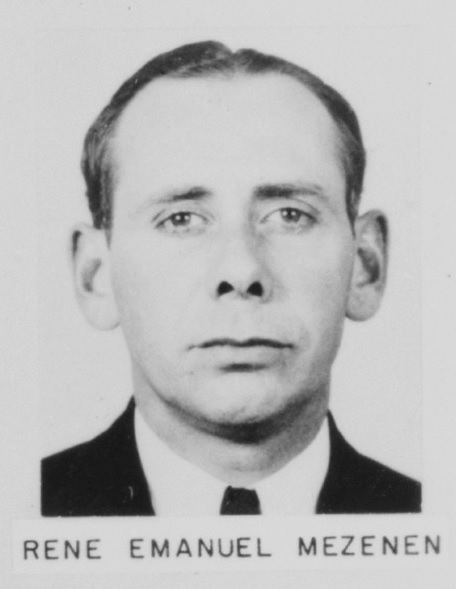
Rene Emanuel Mezenen, a Frenchman, claimed U.S. citizenship through the naturalization of his father. Prior to his arrest, he was employed as a steward in the Pan American transatlantic clipper service.[13]
The German Intelligence Service in Lisbon, Portugal, asked Mezenen to act as a courier, transmitting information between the United States and Portugal on his regular commercial aircraft trips. As a steward he was able to deliver documents from New York to Lisbon in 24 hours. He accepted this offer for financial gain. In the course of flights across the Atlantic, Mezenen reported his observance of convoys sailing for England. He also became involved in smuggling platinum from the United States to Portugal. When discussing his courier role with agent Sebold, Mezenen boasted that he hid the spy letters so well that if they were found it would have taken two to three weeks to repair the airplane.[13]
Following a plea of guilty, Mezenen received an eight-year prison term for espionage and two concurrent years for registration violations.[13]
Carl Reuper[]
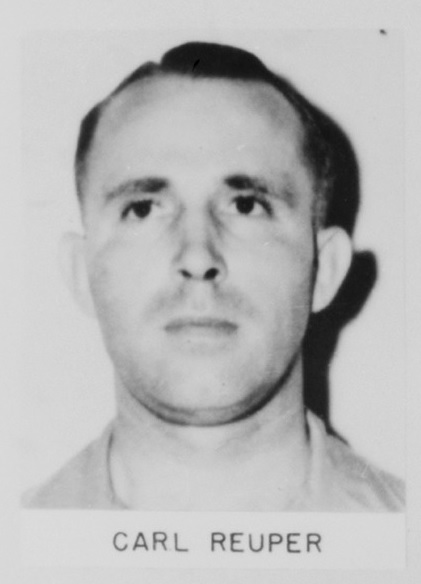
Having come to the United States from Germany in 1929, Carl Reuper became a citizen in 1936. Prior to his arrest, he served as an inspector for the Westinghouse Electric Company in Newark, New Jersey.[13] Previously, he worked as a mechanic for the Air Associates Company in Bendix, New Jersey.[9]
Reuper obtained photographs for Germany relating to national defense materials and construction, which he obtained from his employment. He arranged radio contact with Germany through the station established by Felix Jahnke. On one occasion, he conferred with Sebold regarding the latter's facilities for communicating with German authorities. Upon conviction, Reuper was sentenced to 16 years' imprisonment on espionage charges and 2 years' concurrent sentence under the Registration Act.[13]
Everett Minster Roeder[]
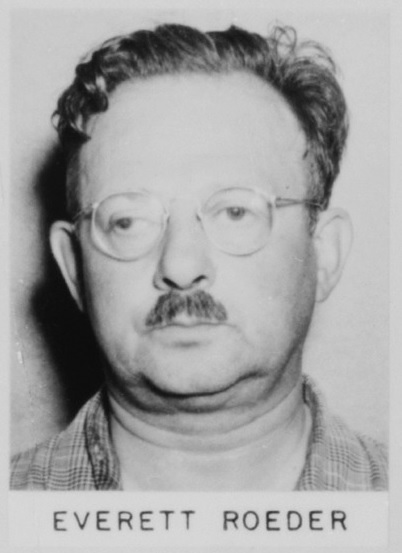
Born in the Bronx, New York, Everett Minster Roeder was the son of a celebrated piano instructor, Carl Roeder.[9] A child prodigy, when he was 15 years old he enrolled in engineering at Cornell University and there he met the brothers Edward and Elmer Sperry; however he dropped out of school when he was 18 and married his pregnant girlfriend.[9] He was one of the first employees at the Sperry Gyroscope Company where he worked as an engineer and designer of confidential materials for the U.S. Army and Navy.[2] In his job as a gyroscope expert working on U.S. military contracts, Roeder built machines such as tracking devices for long range guns capable of hitting moving targets 10 miles away, aircraft autopilot and blind-flying systems, ship stabilizers, and anti-aircraft search lights.[9]
Sebold had delivered microphotograph instructions to Roeder, as ordered by German authorities. Roeder and Sebold met in public places and proceeded to spots where they could talk privately. In 1936, Roeder had visited Germany and was requested by German authorities to act as an espionage agent. Primarily due to monetary rewards he would receive, Roeder agreed.[13]
Among the Sperry development secrets Roeder disclosed were the blueprints of the complete radio instrumentation of the new Glenn Martin bomber, classified drawings of range finders, blind-flying instruments, a bank-and-turn indicator, a navigator compass, a wiring diagram of the Lockheed Hudson bomber, and diagrams of the Hudson gun mountings.[2] From Roeder the Abwehr also obtained the plans for an advanced automatic pilot device that was later used in Luftwaffe fighters and bombers.* [15] At the time of his arrest, Roeder had 16 guns in his Long Island home in New York.[9]
Roeder entered a guilty plea to the charge of espionage and was sentenced to 16 years in prison. In 1949, Roeder published his book, Formulas in plane triangles.[16]
Paul Alfred W. Scholz[]
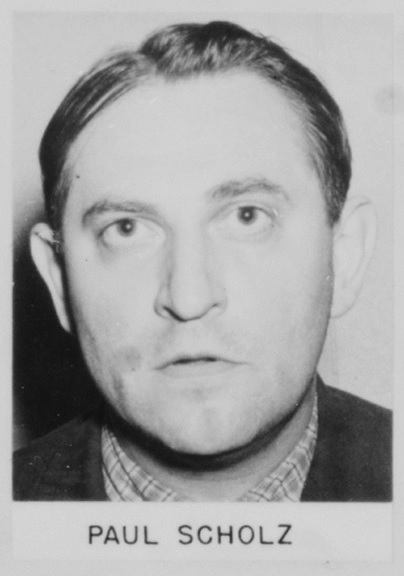
A German native, Paul Scholz went to the United States in 1926 but never attained citizenship. He had been employed in German book stores in New York City, where he disseminated Nazi propaganda.[13]
Scholz had arranged for Josef Klein to construct the radio set used by Felix Jahnke and Axel Wheeler-Hill. At the time of his arrest, Scholz had just given Gustav Wilhelm Kaercher a list of radio call letters and frequencies. He also encouraged members of this spy ring to secure data for Germany and arranged contacts between various German agents.[13]
Upon conviction, Scholz was sentenced to 16 years' imprisonment for espionage with 2 years' concurrent sentence under the Registration Act.[13]
George Gottlob Schuh[]
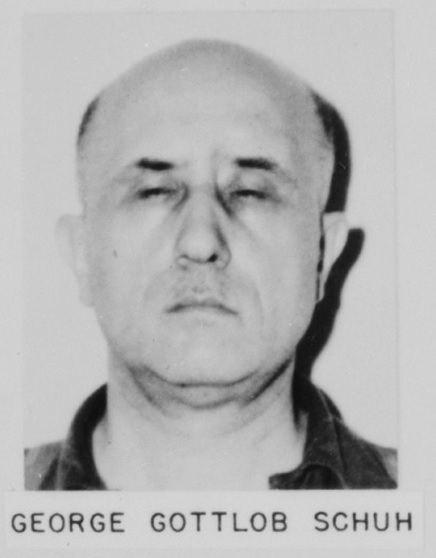
George Gottlob Schuh, a native of Germany, went to the United States in 1923. He became a citizen in 1939 and was employed as a carpenter.[13]
As a German agent, he sent information directly to the Gestapo in Hamburg from the United States. Schuh had provided Alfred Brokhoff information that Winston Churchill had arrived in the United States on HMS King George V. He also furnished information to Germany concerning the movement of ships carrying materials and supplies to Britain.[13]
Having pleaded guilty to violation of the Registration Act, Schuh received a sentence of 18 months in prison and a $1,000 fine.[13]
Erwin Wilhelm Siegler[]
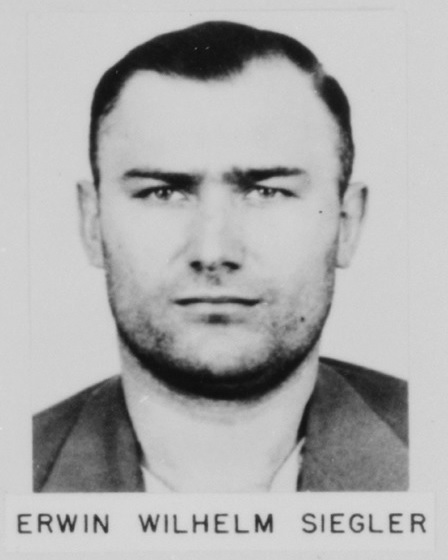
Erwin Wilhelm Siegler went to the United States from Germany in 1929 and attained citizenship in 1936. He had served as chief butcher on the SS America until it was taken over by the U.S. Navy.[13]
A courier, Siegler brought microphotographic instructions to Sebold from German authorities on one occasion. He also had brought $2,900 from German contacts abroad to pay Lilly Stein, Duquesne, and Roeder for their services and to buy a bomb sight. He served the espionage group as an organizer and contact man, and he also obtained information about the movement of ships and military defense preparations at the Panama Canal.[13]
Subsequent to his conviction, Siegler was sentenced to 10 years' imprisonment on espionage charges and a concurrent 2-year term for violation of the Registration Act.[13]
Oscar Richard Stabler[]
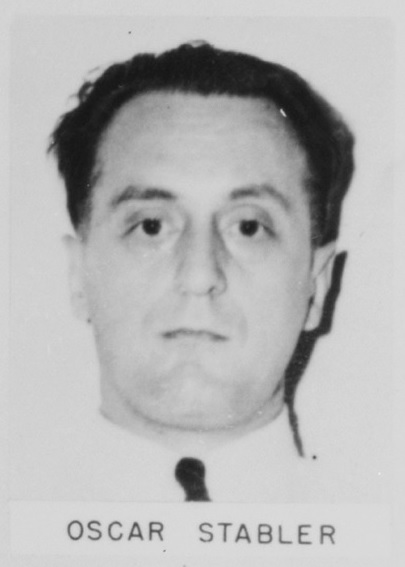
Born in Germany, Oscar Richard Stabler went to the United States in 1923 and became a citizen in 1933. He had been employed primarily as a barber aboard transoceanic ships.
In December 1940, British authorities in Bermuda found a map of Gibraltar in his possession. He was detained for a short period before being released. A close associate of Conradin Otto Dold, Stabler served as a courier, transmitting information between German agents in the United States and contacts abroad.[13]
Stabler was convicted and sentenced to serve five years in prison for espionage and a two-year concurrent term under the Registration Act.[13]
Heinrich Stade[]
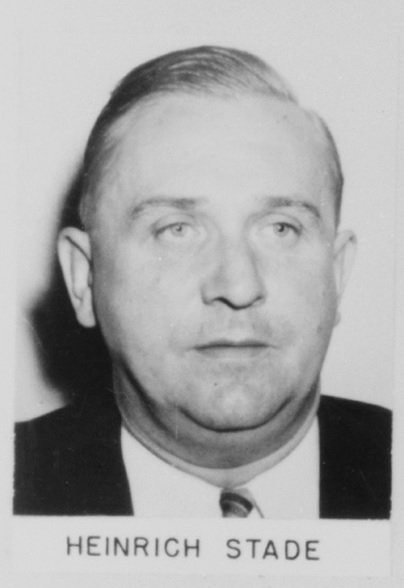
Heinrich Stade went to the United States from Germany in 1922 and became a citizen in 1929.[13] He had been a musician and publicity agent in New York. He told agent Sebold he had been in the German Gestapo since 1936 and boasted that he knew everything in the spy business.
Stade had arranged for Paul Bante's contact with Sebold and had transmitted data to Germany regarding points of rendezvous for convoys carrying supplies to England.[13]
Stade was arrested while playing in the orchestra at an inn on Long Island, New York. Following a guilty plea to violation of the Registration Act, Stade was fined $1,000 and received a 15-month prison sentence.[13]
Lilly Barbara Carola Stein[]
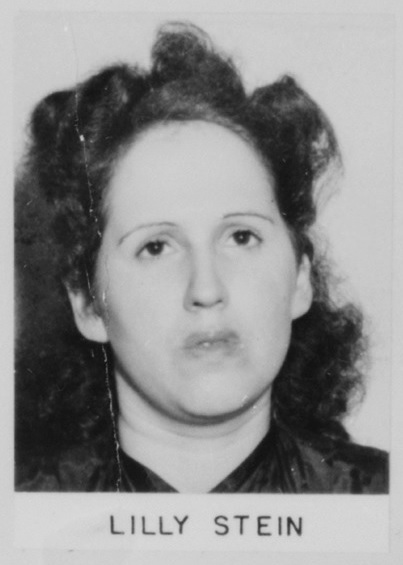
Born in Vienna, Stein was a Jewish immigrant who had escaped in 1939 with the help of a U.S. diplomat in Vienna, Vice Consul Ogden Hammond Jr.[9] She later met Hugo Sebold, the espionage instructor who had trained William Sebold (the two men were not related) in Hamburg, Germany. She enrolled in this school and was sent to the United States by way of Sweden in 1939.[13]
In New York, she worked as an artist's model and was said to have moved in New York's social circles. As a German agent her mission was to find her targets at New York nightclubs, sleep with these men, and attempt to blackmail them or otherwise entice them to give up valuable secrets. One FBI agent described her as a "good-looking nymphomaniac".[9] Stein was one of the people to whom Sebold had been instructed to deliver microphotograph instructions upon his arrival in the United States. She frequently met with Sebold to give him information for transmittal to Germany, and her address was used as a return address by other agents in mailing data for Germany.[13]
Stein pleaded guilty and received sentences of 10 years' and 2 concurrent years' imprisonment for violations of espionage and registration statutes, respectively.[13] She served 12 years and left for France where she found employment at a luxury resort near Strasbourg.[9]
Franz Joseph Stigler[]

In 1931, Franz Joseph Stigler, left Germany for the United States, where he became a citizen in 1939. He had been employed as a crew member and chief baker aboard U.S. ships until his discharge from the SS America when the U.S. Navy converted that ship into USS West Point.[13] His constant companion was Erwin Siegler, and they operated as couriers in transmitting information between the United States and German agents aboard. Stigler sought to recruit amateur radio operators in the United States as channels of communication to German radio stations. He had also observed and reported defense preparations in the Panama Canal Zone and had met with other German agents to advise them in their espionage pursuits.[13] In January 1941, Stigler asked agent Sebold to radio Germany that Prime Minister Winston Churchill had arrived secretly in the U.S. on the H.M.S. King George V with Lord Halifax.[citation needed]
Upon conviction, Stigler was sentenced to serve 16 years in prison on espionage charges with 2 concurrent years for registration violations.[13]
Erich Strunck[]
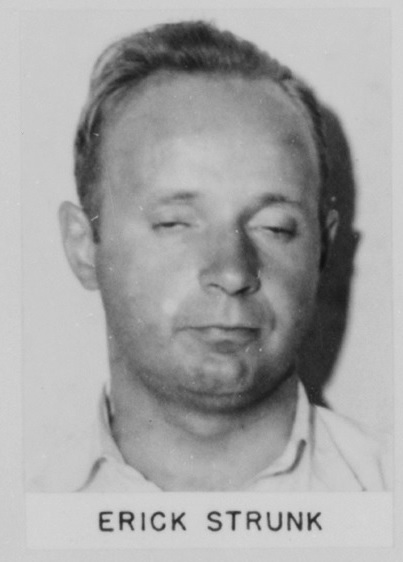
A seaman aboard the ships of the United States Lines since his arrival in the United States, Erich Strunck went to the United States from Germany in 1927. He became a naturalized citizen in 1935. As a courier, Strunck carried messages between German agents in the United States and Europe. He requested authority to steal the diplomatic bag of a British officer traveling aboard his ship and to dispose of the officer by pushing him overboard. Sebold convinced him that it would be too risky to do so.[13]
Strunck was convicted and sentenced to serve 10 years in prison on espionage charges. He also was sentenced to serve a two-year concurrent term under the Registration Act.[13]
Leo Waalen[]
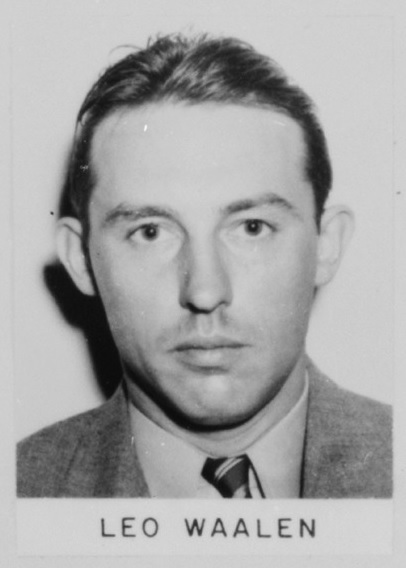
Leo Waalen was born in Danzig, Germany. He entered the United States by "jumping ship" about 1935. He was a painter for a small boat company which was constructing small craft for the U.S. Navy.[13]
Waalen gathered information about ships sailing for England. He also obtained a confidential booklet issued by the FBI which contained precautions to be taken by industrial plants to safeguard national defense materials from sabotage. He secured government contracts listing specifications for materials and equipment, as well as detailed sea charts of the United States Atlantic coastline.[13]
In May 1941, the SS Robin Moor was carrying nine officers, 29 crewmen, seven or eight passengers, and a commercial cargo from New York to Mozambique via South Africa, without a protective convoy. On 21 May, the ship was stopped by U-69 in the tropical Atlantic 750 miles west of the British-controlled port of Freetown, Sierra Leone.[citation needed]
Although the SS Robin Moor was flying the flag of a neutral country, her mate was told by the U-boat crew that they had decided to "let us have it". After a brief period for the ship's crew and passengers to board her four lifeboats, the U-boat fired a torpedo and then shelled the vacated ship.[citation needed]
Once the ship sank beneath the waves, the submarine's crew pulled up to Captain W.E. Myers' lifeboat, left him with four tins of ersatz bread and two tins of butter, and explained that the ship had been sunk because she was carrying supplies to Germany's enemy.[citation needed]
In October 1941, federal prosecutors adduced testimony that Waalen, one of the fourteen accused men who had pleaded not guilty to all charges, had submitted the sailing date of the SS Robin Moor for radio transmission to Germany, five days before the ship began her final voyage.[citation needed]
Following his conviction, Waalen was sentenced to 12 years in prison for espionage and a concurrent 2-year term for violation of the Registration Act.[13]
Adolf Henry August Walischewski[]
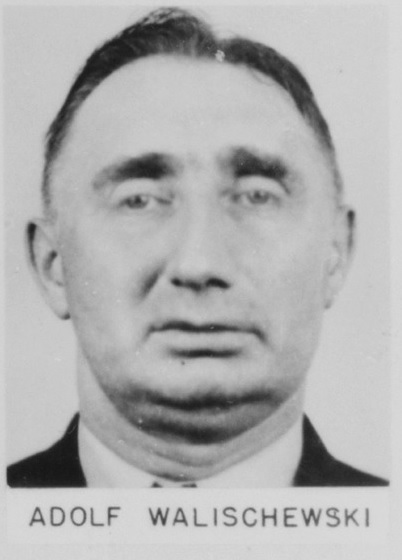
A German native, Walischewski had been a seaman since maturity. He became a naturalized citizen in 1935. Walischewski became connected with the German espionage system through Paul Fehse. His duties were confined to those of courier, carrying data from agents in the United States to contacts abroad.[13]
Upon conviction, Walischewski received a five-year prison sentence on espionage charges, as well as a two-year concurrent sentence under the Registration Act.[13]
Else Weustenfeld[]
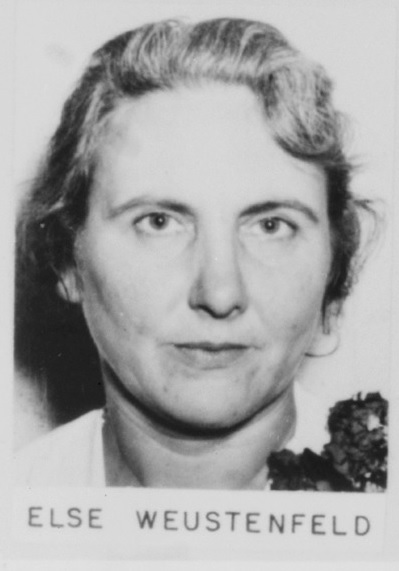
Else Weustenfeld arrived in the United States from Germany in 1927 and became a citizen 10 years later. From 1935 until her arrest, she was a secretary for a law firm representing the German Consulate in New York City.[13]
Weustenfeld was thoroughly acquainted with the German espionage system and delivered funds to Duquesne which she had received from Lilly Stein, her close friend.[13]
She lived in New York City with Hans W. Ritter, a principal in the German espionage system. His brother, Nickolaus Ritter, was the "Dr. Renken" who had enlisted Sebold as a German agent. In 1940, Weustenfeld visited Hans Ritter in Mexico, where he was serving as a paymaster for the German Intelligence Service.[13]
After pleading guilty, Else Weustenfeld was sentenced to five years' imprisonment on charge of espionage and two concurrent years on a charge of registration violations.[13]
Axel Wheeler-Hill[]

Axel Wheeler-Hill went to the United States in 1923 from his native Russia. He was naturalized as a citizen in 1929 and was employed as a truck driver.[13]
Wheeler-Hill obtained information for Germany regarding ships sailing to Britain from New York Harbor. With Felix Jahnke, he enlisted the aid of Paul Scholz in building a radio set for sending coded messages to Germany.[13]
Following conviction, Wheeler-Hill was sentenced to serve 15 years in prison for espionage and 2 concurrent years under the Registration Act.[13]
Bertram Wolfgang Zenzinger[]

Born in Germany, Bertram Wolfgang Zenzinger went to the United States in 1940 as a naturalized citizen of the Union of South Africa. His reported reason for coming to the United States was to study mechanical dentistry in Los Angeles, California.[13]
In July 1940, Zenzinger received a pencil for preparing invisible messages for Germany in the mail from Siegler. He sent several letters to Germany through a mail drop in Sweden, outlining details of national defense materials.[13]
Zenzinger was arrested by FBI agents on April 16, 1941. Pleading guilty, he received 18 months in prison for violation of the Registration Act and 8 years' imprisonment for espionage.[13]
Liaisons to the Duquesne Spy Ring[]
Takeo Ezima[]

Lieut Commander Takeo Ezima of the Imperial Japanese Navy operated in New York as an engineer inspector using the name: E. Satoz;[9][page needed] code name: KATO.[17]
He arrived on the Heian Maru in Seattle in 1938.[9] On October 19, 1940, Sebold received a radio message from Germany that CARR (Abwehr Agent Roeder) was to meet E. Satoz at a Japanese club in New York.[18]
Ezima was filmed by the FBI while meeting with agent Sebold in New York, conclusive evidence of German-Japanese cooperation in espionage, in addition to meeting with Kanegoro Koike, Paymaster Commander of the Japanese Imperial Navy assigned to the Office of the Japanese Naval Inspector in New York.[9][19] Ezima obtained a number of military materials from Duquesne, including ammunition, a drawing of a hydraulic unit with pressure switch A-5 of the Sperry Gyroscope, and an original drawing from the Lawrence Engineering and Research Corporation of a soundproofing installation, and he agreed to deliver materials to Germany via Japan.[17][19][20] The British had made the Abwehr courier route from New York through Lisbon, Portugal difficult, so Ezima arranged an alternate route to the West Coast with deliveries every two weeks on freighters destined for Japan.[18]
As the FBI arrested Duquesne and his agents in New York in 1941, Ezima escaped to the West Coast, boarded the Japanese freighter Kamakura Maru, and left for Tokyo.[20] One historian states that Ezima was arrested for espionage in 1942 and sentenced to 15 years;[19] however, U.S Naval Intelligence documents state that "at the request [of] the State Department, Ezima was not prosecuted."[17]
Nikolaus Adolph Fritz Ritter[]

Oberstleutnant (Lieutenant colonel) Nikolaus Ritter led spy rings in the United States, Great Britain, and North Africa from 1936 to 1941. Ritter was born in Germany and had served as an officer in the First World War on the Western Front in France where he was twice wounded. He emigrated to New York in 1924, married an American, and returned to Germany in 1936 to join the Abwehr as Chief of Air Intelligence based in Hamburg operating under the code name: DR. RANTZAU.
He first met Fritz Duquesne in 1931, and the two spies reconnected in New York on December 3, 1937. Ritter also met Herman Lang while in New York, and he arranged for Lang to later go to Germany help the Nazis finish their version of the topsecret Norden bombsight. Ritter achieved several major successes with the Abwehr, most notably the Norden bombsight, in addition to an advanced aircraft auto-pilot from the Sperry Gyroscope Company, and also intelligence operations in North Africa in support of Field Marshal Erwin Rommel. But some of Ritter's recruits became double-agents who catastrophically exposed his spy rings.[9]
Ritter recruited William Sebold who later joined the FBI which resulted in the arrest of the 33 Abwehr agents of the Duquesne Spy Ring. In Great Britain, he recruited Arthur Owens, code named JOHNNY, who became an agent for MI5 (British Intelligence) operating under the code name SNOW. Owens exposed so many Abwehr covert agents operating in Britain that by the end of the war MI5 had enlisted some 120 double agents. Although Ritter was never captured, it was the arrest of the Duquesne Spy Ring that ultimately resulted in Ritter's fall from the Abwehr and his reassignment in 1942 to air defenses in Germany for the remainder of the Second World War.[9]
See also[]
References[]
Notes
- ^ "Obituary. Fritz Joubert Duquesne". Time. June 4, 1956. ISSN 0040-781X. (subscription required)
- ^ Jump up to: a b c d e f g h Evans, Leslie (April 1, 2014). "Fritz Joubert Duquesne: Boer Avenger, German Spy, Munchausen Fantasist". Retrieved May 19, 2014.
- ^ Jump up to: a b Connelly, Sherryl. "New Yorker risks life as double agent in Nazi underground, brings down Duquesne Spy Ring: new book". nydailynews.com.
- ^ Duffy, Peter (2014). Double Agent. Scribner. ISBN 978-1451667950.
- ^ Mormon FBI agent played part in largest espionage case in American history, deseretnews.com, November 5, 2014.
- ^ "W. Friedemann; helped break spy ring for FBI". Associated Press. August 26, 1989. ISSN 0190-8286.
- ^ Jump up to: a b "Deaths". The Washington Post. August 26, 1989. ISSN 0190-8286.
- ^ Jump up to: a b c Ronnie, Art (1995). Counterfeit hero: Fritz Duquesne, adventurer and spy. Annapolis, MD: Naval Institute Press. ISBN 1-55750-733-3. OCLC 605599179.
- ^ Jump up to: a b c d e f g h i j k l m n o p q r s Duffy, Peter (2014). Double Agent. New York: Scribner. ISBN 978-1-4516-6795-0.
- ^ Burnham, Frederick Russell (1944). Taking Chances. Los Angeles, California: Haynes Corp. p. 293. ISBN 1-879356-32-5.
- ^ Wood, Clement (1932). The man who killed Kitchener; the life of Fritz Joubert Duquesne. New York: William Faro, Inc.
- ^ Breuer, William B. (2003). The Spy Who Spent the War in Bed: And Other Bizarre Tales from World War II. Wiley. ISBN 0-471-26739-2.
- ^ Jump up to: a b c d e f g h i j k l m n o p q r s t u v w x y z aa ab ac ad ae af ag ah ai aj ak al am an ao ap aq ar as at au av aw "Duquesne Spy Ring - FBI". Federal Bureau of Investigation, U.S. Department of Justice. May 19, 2016. Retrieved September 10, 2016.
- ^ Ross: Strategic Bombing by the United States in World War II
- ^ Benjamin, Fischer (2000). "A.k.a. "Dr. Rantzau": The Enigma of Major Nikolaus Ritter". Center for the Study of Intelligence Bulletin. Center for the Study of Intelligence (11). OCLC 606543265. Archived from the original on 17 April 2001. Retrieved 21 September 2016.CS1 maint: bot: original URL status unknown (link)
- ^ "Books". Catalog of Copyright Entries. Washington, DC: Library of Congress. 3 (1): 410. 1949.
- ^ Jump up to: a b "Reveal Nazi-Jap Spy Link in U.S. prior to Dec. 7: Tell how Tokio Agent fled as FBI raided ring". Chicago Tribune. Chicago, Illinois. September 21, 1942.
- ^ Jump up to: a b c Roehner, Bertrand M. (2014). Relations between Military Forces and the Population of Hawaii (PDF). University of Paris.
- ^ Jump up to: a b Newark, Tim (2013). The Mafia at War: The Shocking True Story of America's Wartime Pact with Organized Crime. Skyhorse Publishing.
Sources
- Federal Bureau of Investigation Vault: Frederick Duquesne Case Write-up
- FBI Famous Cases & Criminals: The Duquesne Spy Ring
External links[]
 Media related to Duquesne Spy Ring at Wikimedia Commons
Media related to Duquesne Spy Ring at Wikimedia Commons
- 1941 crimes in the United States
- Crime in the United States
- Espionage in the United States
- Federal Bureau of Investigation operations
- Germany–United States relations
- Spy rings
- United States home front during World War II
- World War II espionage
- World War II spies for Germany